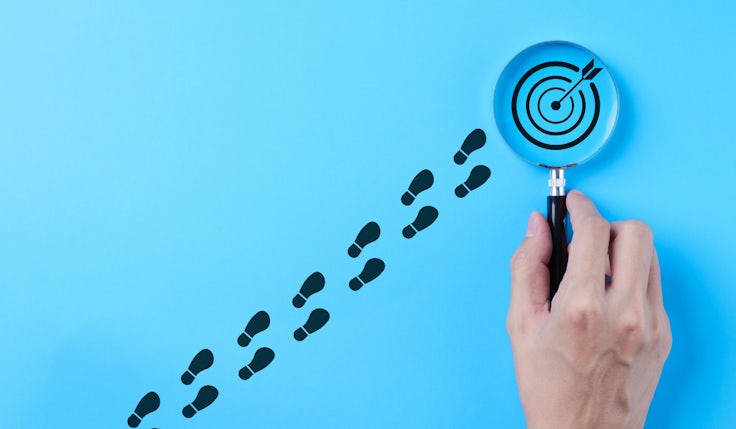AI can’t replace the counter-intuitive thinking behind great creativity
The potential of artificial intelligence to carry out tasks and even exceed human intelligence is vast, but it will struggle to replicate the apparent human frailties that are, in reality, the source of creativity.
 The recent Winter Olympics in Pyeongchang was a marvel of human endeavour. Years of hurt, training and willpower culminating in all-too-brief moments of blood, sweat and tears. From the early morning anticipation as the curlers exchanged ends, stones and ‘the hammer’, to sense-defying spins over the half-pipe, what was on display was nothing short of miraculous.
The recent Winter Olympics in Pyeongchang was a marvel of human endeavour. Years of hurt, training and willpower culminating in all-too-brief moments of blood, sweat and tears. From the early morning anticipation as the curlers exchanged ends, stones and ‘the hammer’, to sense-defying spins over the half-pipe, what was on display was nothing short of miraculous.
If an exploratory alien species had happened to pass over South Korea to witness the Czech Ester Ledecká taking unprecedented golds in both the super-G ski and snowboard giant slalom events, we would no doubt have gone up several points in their estimation – and likely made them reassess their pending invasion plans.
Ledecká’s was not the only world-first at this year’s Games. South Korea deployed 11 variants of robots to marshal, facilitate and entertain during the Olympics.
READ MORE: Ben Davis: Welcome to B2B AI – boring, but effective
From translation services at Incheon Airport to a fairly suspect skiing robot, Pyeongchang was a showcase of over 80 functional automatons on a scale not seen before on the world’s stage.
One member of this robot army was Hubo, a cyborg of sorts created by the Korean Advanced Institute of Science and Technology. Back in 2017, Hubo carried the Olympic torch and, not only that, the tottering little chap drilled through a wall and passed the torch through it – just because he could.
In the age of technology, the gap between robotic and human achievement has never been closer. In the marketing sphere, artificial intelligence is our own skiing robot, and if recent advances in AI are anything to go by it’s a hell of a lot closer to beating us mere mortals than its ‘slalom Marvin’ cousin.
“AI is being used across a whole host of industries, but its deployment remains fairly subtle, at least outside specialist businesses,” states Neill Horie, head of artificial intelligence at integrated agency Home. “AI is increasingly common in marketing and we work with automatic bidding and programmatic as well as more advanced machine learning for data analysis.”
The most obvious manifestation is in the AI search functionality from the likes of Amazon and Google. Even before they started managing your living room lighting or ordering groceries via virtual assistants, search engines were a form of weak AI, collecting a massive amount of information and using rapid data analysis to improve their performance.
Gartner research in January 2018 concluded: “By 2022, 40% of customer-facing employees and government workers will consult an AI-powered virtual agent every day for decision-making or process-related support.”
Narrow versus general AI
This stat is only the thin end of the wedge, encompassing as it does only ‘narrow AI’ (NAI). It’s the equivalent of an AI cheeseburger in scale, and unsurprisingly there are Quarter Pounders, Big Macs and mega macs of AI all waiting in the wings.
NAI can fulfil one task and one task only, such as playing a game against a human counterpart or recommending what train you should catch. Speech capture and image recognition are NAI capabilities and Tesla’s self-driving technology is a collaboration of several NAIs woven together. According to technology website Futurism, the AI platform Lawgeex recently outperformed 20 trained lawyers in reviewing non-disclosure agreementsand assessing risk.
AI will struggle to replicate the very human frailties and perceived weaknesses from which creative greatness so often stems.
Despite these advances NAI is often referred to as ‘weak AI’, yet in reality it’s anything but. NAI can accomplish a diverse set of useful functions and crucially is the thing that is most likely to shunt people from their jobs in the near future. In marketing terms, NAI is what analyses big data to find patterns, for example when pricing products for different markets and demographics in real time.
As cool as all that sounds, the big elephant in the room comes in the form of general artificial intelligence, or GAI.
READ MORE: Samsung looks to a ‘new frontier’ of mobile intelligence
GAI (also known as ‘strong AI’) can reason within its environment. It’s much more human-like in the way in which it deciphers data and although still in its infancy, the way in which it randomises thought process looks like a scarily accurate mimic of the human brain.
Creativity and the coercing of random, original thought seem to be as problematic to AI algorithms as the stairs were for ED-209 in Robocop. Ben Dickson, writing on BDTechTalks.com, suggests AI is limited to adapting and improving things that already exist rather than creating new technology and hypothetical thought from scratch.
“Humans might not be able to process data as fast as computers, but they can think abstractly and plan, solve problems at a general level without going into the details. They can innovate, come up with thoughts and ideas that have no precedence… it’s very hard to teach a computer to invent something that isn’t there.”
Nobody can predict when GAI will manifest, if indeed it ever will. Some, such as Google’s Peter Norvig, don’t feel there’s a need for GAI at a replicable human level. This stance was never better expressed than by Douglas Adams in his book The Restaurant at the End of the Universe.
“There is a theory which states that if ever anyone discovers exactly what the universe is for and why it is here, it will instantly disappear and be replaced by something even more bizarre and inexplicable. There is another theory which states that this has already happened.”
Others, including the University of Oxford’s resident expert Nick Bostrom, believe that when GAI becomes significantly smarter than human beings we’ll breach the final frontier known as super artificial intelligence (SAI).
By some accounts, the distance between GAI and SAI is infinitesimal, and nobody has any idea what entering that next phase of evolution would mean for the human race at large. The late, great Professor Stephen Hawking reckoned that it would eventuate in the end of days. Conversely, Demis Hassabis at Google believes that SAI would be the dawn of a new, better epoch.
Why humans can’t be replicated
Pulling back to present day reality, a GAI world looks likely to be just around the corner. Tasks and data analysis twinned with the suggestion of appropriate solutions would come hand in hand, but what of those human traits that NAI is currently unable to replicate? Are machines capable of matching us in such immeasurable traits as creativity, bravery and nonsensical decision making?
The Winter Olympics was a magical demonstration of the phenomenal, performed by the brave and executed to the full extent of human potential. It’s the manifestation of everything it means to be a successful human and, as such, a valuable measuring stick.
Creativity, bravery and the capacity to say ‘fuck it’ when the data would suggest, absolutely, to err on the side of caution were seen in abundance over the 16 days of the Games and have been witnessed again at the Winter Paralympics.
Shaun White’s final run in the snowboard half-pipe could have been sent by a GAI algorithm. He had silver in the bag, no one could take that away so he had nothing to lose in going after Ayumu Hirano. And go after it he did, pulling off an astounding front side double cork 1440, back-to-back 1440s and a double McTwist. It was a risk-free Hail Mary that paid off handsomely, clinched White’s third gold and cemented his god-like status for eternity.
Now counter that with the performance of Team GB’s Elise Christie in the short track speed skating. Already the nation’s darling having crashed out of medal contention in the previous Olympics, Christie is both world and European champion. Pyeongchang offered a chance of a fairy-tale redemption.
However Christie ended up battered, bruised and disbelieving without a single, solitary medal. Disqualification in the 1,000m heats followed nightmare crashes in both the 500m final and the semi of the 1,500m.
Her efforts superseded rational thinking. When set against clearly defined KPIs of medal position, no computer would have made the margin calls she did – they would have played safe, kept position and given themselves the maximum chance of medalling. But Elise Christie didn’t – she risked everything in a series of split second decisions and saw her chances evaporate.
Her bravery was wonderful, and yet it was ultimately tragic. Above all else, it was human.
This seems to be the clincher, then. AI (and latterly GAI and SAI) will seemingly struggle to replicate the very human frailties and perceived weaknesses from which creative greatness so often stems. Even better work will be produced by real people using astute analysis from GAI to deliver creative perfection.
In a 2016 interview with Forbes, Google’s Norvig neatly summarised this more collaborative future relationship between human beings and AI.
“We know how to build real intelligence; my wife and I did it twice, although she did a lot more of the work. We don’t need to duplicate humans. That’s why I focus on having tools to help us rather than duplicate what we already know how to do. We want humans and machines to partner and do something that they cannot do on their own.”
Harry Lang (Harry@BrandArchitects.info) is the founder of integrated marketing consultancy Brand Architects and interim acquisition director of Genting Casino.
Don’t miss Marketing Week’s AI and technology conference Supercharged, taking place on 1 May in London, where you can learn how AI, machine learning and emerging technology are powering marketing. Register now.







